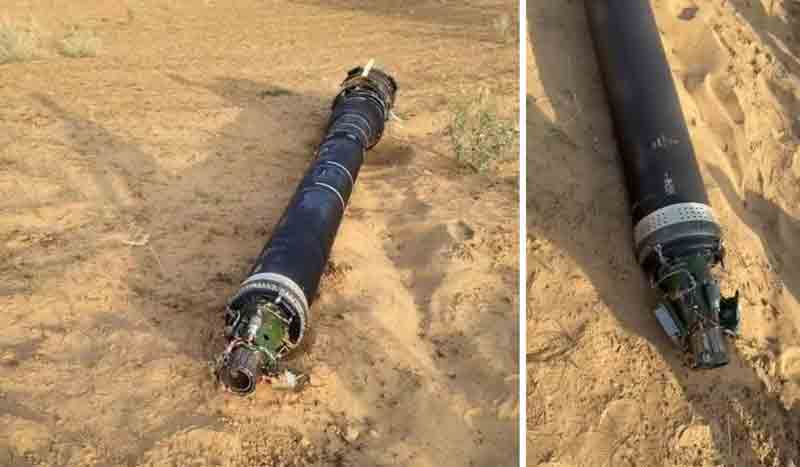Fragments suspected to be from a Chinese-manufactured HQ-9 surface-to-air missile were discovered in Rajasthan, India. Additionally, Indian officials have retrieved components of a Chinese-produced PL-15 air-to-air missile in Hoshiarpur, Punjab, amid recent military tensions with Pakistan.
Social media is currently showcasing images of a large cylindrical object that is partially buried in desert sand, displaying features typical of rocket motor components. This object, measuring several meters in length, bears resemblance to parts of the HQ-9BE, an export model of China’s HQ-9 long-range air defense missile system developed by China Precision Machinery Import-Export Corporation (CPMIEC).
Local reports indicate that the missile debris fell in the area without resulting in any casualties or damage to nearby infrastructure. The HQ-9BE is designed to intercept aircraft, cruise missiles, and ballistic threats at distances of up to 250 kilometers, depending on the specific variant and conditions of engagement.
Observers have pointed out that the wreckage, which aligns with the size and structural characteristics of an HQ-9 missile stage, likely originated from an operational interception attempt. Unofficial reports suggest that the missile may have been launched by Pakistan to counter an Indian Air Force attack, with one of the interceptors landing within Indian territory.
The HQ-9 series is part of China’s growing inventory of domestic missile technologies and has been sold to various nations, including Pakistan and Turkmenistan. The HQ-9BE variant is particularly aimed at international clients and features advanced radar seekers and enhanced targeting precision.
Indian media released images of missile debris, while the reasons for the missile’s presence in Indian territory are still being investigated. The PL-15, an advanced beyond-visual-range air-to-air missile developed by China, has a domestic variant that can travel between 200 to 300 kilometers. In contrast, the export version utilized by Pakistan, known as the PL-15E, reportedly has a range of about 145 kilometers.
It can reach speeds exceeding Mach 5, powered by a dual-pulse solid-propellant rocket motor, and is equipped with an active electronically scanned array (AESA) radar seeker that receives mid-course datalink updates.
Previously, Pakistan unveiled the first official images of its enhanced JF-17C fighter jet, which is armed with PL-10 and PL-15 missiles. For the first time, officials in Islamabad acknowledged the fighter’s ability to utilize the long-range PL-15, emphasizing China’s increasing involvement in supplying Pakistan with advanced air combat technologies.
The Pakistan Air Force has characterized this display as a deterrent strategy, highlighting its readiness to counter any potential Indian aggression.
Discover more from Defence Talks | Defense News Hub, Military Updates, Security Insights
Subscribe to get the latest posts sent to your email.





